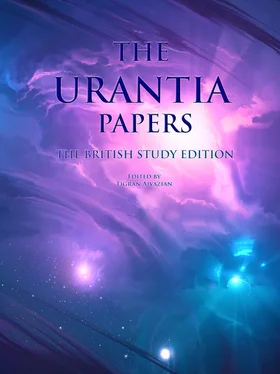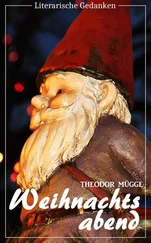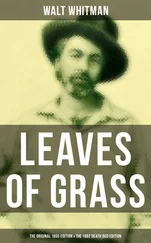189:4.8As they drew near the sepulchre, the frightened Magdalene, who was even more terrorized when she failed to find her sisters waiting when she came out of the tomb, now rushed up to them, excitedly exclaiming: “He is not there — they have taken him away!” And she led them back to the tomb, and they all entered and saw that it was empty.
189:4.9All five of the women then sat down on the stone near the entrance and talked over the situation. It had not yet occurred to them that Jesus had been resurrected. They had been by themselves over the Sabbath, and they conjectured that the body had been moved to another resting place. But when they pondered such a solution of their dilemma, they were at a loss to account for the orderly arrangement of the grave cloths; how could the body have been removed since the very bandages in which it was wrapped were left in position and apparently intact on the burial shelf?
189:4.10¶ As these women sat there in the early hours of the dawn of this new day, they looked to one side and observed a silent and motionless stranger. For a moment they were again frightened, but Mary Magdalene, rushing toward him and addressing him as if she thought he might be the caretaker of the garden, said, “Where have you taken the Master? Where have they laid him? Tell us that we may go and get him.” When the stranger did not answer Mary, she began to weep. Then spoke Jesus to them, saying, “Whom do you seek?” Mary said: “We seek for Jesus who was laid to rest in Joseph’s tomb, but he is gone. Do you know where they have taken him?” Then said Jesus: “Did not this Jesus tell you, even in Galilee, that he would die, but that he would rise again?” These words startled the women, but the Master was so changed that they did not yet recognize him with his back turned to the dim light. And as they pondered his words, he addressed the Magdalene with a familiar voice, saying, “Mary.” And when she heard that word of well-known sympathy and affectionate greeting, she knew it was the voice of the Master, and she rushed to kneel at his feet while she exclaimed, “My Lord, and my Master!” And all of the other women recognized that it was the Master who stood before them in glorified form, and they quickly knelt before him.
189:4.11These human eyes were enabled to see the morontia form of Jesus because of the special ministry of the transformers and the midwayers in association with certain of the morontia personalities then accompanying Jesus.
189:4.12¶ As Mary sought to embrace his feet, Jesus said: “Touch me not, Mary, for I am not as you knew me in the flesh. In this form will I tarry with you for a season before I ascend to the Father. But go, all of you, now and tell my apostles — and Peter — that I have risen, and that you have talked with me.”
189:4.13After these women had recovered from the shock of their amazement, they hastened back to the city and to the home of Elijah Mark, where they related to the ten apostles all that had happened to them; but the apostles were not inclined to believe them. They thought at first that the women had seen a vision, but when Mary Magdalene repeated the words which Jesus had spoken to them, and when Peter heard his name, he rushed out of the upper chamber, followed closely by John, in great haste to reach the tomb and see these things for himself.
189:4.14The women repeated the story of talking with Jesus to the other apostles, but they would not believe; and they would not go to find out for themselves as had Peter and John.
5. PETER AND JOHN AT THE TOMB
189:5.1As the two apostles raced for Golgotha and the tomb of Joseph, Peter’s thoughts alternated between fear and hope; he feared to meet the Master, but his hope was aroused by the story that Jesus had sent special word to him. He was half persuaded that Jesus was really alive; he recalled the promise to rise on the third day. Strange to relate, this promise had not occurred to him since the crucifixion until this moment as he hurried north through Jerusalem. As John hastened out of the city, a strange ecstasy of joy and hope welled up in his soul. He was half convinced that the women really had seen the risen Master.
189:5.2John, being younger than Peter, outran him and arrived first at the tomb. John tarried at the door, viewing the tomb, and it was just as Mary had described it. Very soon Simon Peter rushed up and, entering, saw the same empty tomb with the grave cloths so peculiarly arranged. And when Peter had come out, John also went in and saw it all for himself, and then they sat down on the stone to ponder the meaning of what they had seen and heard. And while they sat there, they turned over in their minds all that had been told them about Jesus, but they could not clearly perceive what had happened.
189:5.3Peter at first suggested that the grave had been rifled, that enemies had stolen the body, perhaps bribed the guards. But John reasoned that the grave would hardly have been left so orderly if the body had been stolen, and he also raised the question as to how the bandages happened to be left behind, and so apparently intact. And again they both went back into the tomb more closely to examine the grave cloths. As they came out of the tomb the second time, they found Mary Magdalene returned and weeping before the entrance. Mary had gone to the apostles believing that Jesus had risen from the grave, but when they all refused to believe her report, she became downcast and despairing. She longed to go back near the tomb, where she thought she had heard the familiar voice of Jesus.
189:5.4As Mary lingered after Peter and John had gone, the Master again appeared to her, saying: “Be not doubting; have the courage to believe what you have seen and heard. Go back to my apostles and again tell them that I have risen, that I will appear to them, and that presently I will go before them into Galilee as I promised.”
189:5.5Mary hurried back to the Mark home and told the apostles she had again talked with Jesus, but they would not believe her. But when Peter and John returned, they ceased to ridicule and became filled with fear and apprehension.
PAPER № 190
MORONTIA APPEARANCES OF JESUS
Midwayer Commission
190:0.1The resurrected Jesus now prepares to spend a short period on Urantia for the purpose of experiencing the ascending morontia career of a mortal of the realms. Although this time of the morontia life is to be spent on the world of his mortal incarnation, it will, however, be in all respects the counterpart of the experience of Satania mortals who pass through the progressive morontia life of the seven mansion worlds of Jerusem.
190:0.2All this power which is inherent in Jesus — the endowment of life — and which enabled him to rise from the dead, is the very gift of eternal life which he bestows upon kingdom believers, and which even now makes certain their resurrection from the bonds of natural death.
190:0.3The mortals of the realms will arise in the morning of the resurrection with the same type of transition or morontia body that Jesus had when he arose from the tomb on this Sunday morning. These bodies do not have circulating blood, and such beings do not partake of ordinary material food; nevertheless, these morontia forms are real. When the various believers saw Jesus after his resurrection, they really saw him; they were not the self-deceived victims of visions or hallucinations.
190:0.4Abiding faith in the resurrection of Jesus was the cardinal feature of the faith of all branches of the early gospel teaching. In Jerusalem, Alexandria, Antioch, and Philadelphia all the gospel teachers united in this implicit faith in the Master’s resurrection.
190:0.5¶ In viewing the prominent part which Mary Magdalene took in proclaiming the Master’s resurrection, it should be recorded that Mary was the chief spokesman for the women’s corps, as was Peter for the apostles. Mary was not chief of the women workers, but she was their chief teacher and public spokesman. Mary had become a woman of great circumspection, so that her boldness in speaking to a man whom she considered to be the caretaker of Joseph’s garden only indicates how horrified she was to find the tomb empty. It was the depth and agony of her love, the fullness of her devotion, that caused her to forget, for a moment, the conventional restraints of a Jewish woman’s approach to a strange man.
Читать дальше






![Theresa Cheung - The Dream Dictionary from A to Z [Revised edition] - The Ultimate A–Z to Interpret the Secrets of Your Dreams](/books/692092/theresa-cheung-the-dream-dictionary-from-a-to-z-r-thumb.webp)





